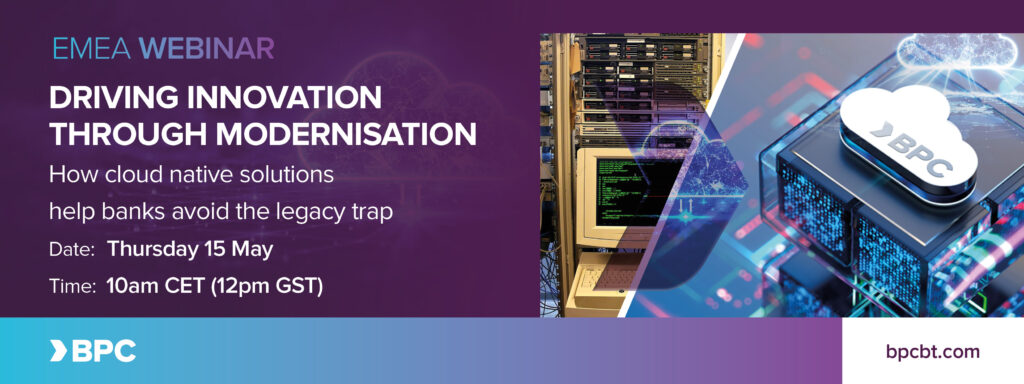
Over the past few years, cloud infrastructure and microservices architecture have emerged as the key disruptors of the payments landscape—driving unprecedented efficiency, fault-tolerance, transparency, manageability and cost-effectiveness.
System modernisation enables IT organisations to keep pace with market challenges and ever-rising customer expectations. Yet according to a recent McKinsey report, issuing and acquiring banks still dedicate up to 70 percent of their IT budgets to maintaining and patching legacy systems—a short-term fix that delays true progress rather than fostering innovation. Legacy cores—prevalent in nearly three-quarters of banks worldwide—limit the ability to roll out new features quickly, manage costs effectively and scale in tandem with rising transaction volumes.
Meanwhile, the rise of digital payments—propelled by instant rails, QR codes, digital wallets and SuperApps—demands that acquirers process ever-greater transaction volumes faster and at scale. In Europe, for instance, the SEPA Instant Credit Transfer scheme has already processed billions in real-time payments, and instant transactions are expected to represent one in three total card and account-to-account payments by 2030. To keep pace, acquirers must adopt flexible, cloud-native platforms that can deliver new services rapidly and cost-effectively.
Choosing the right solution early in a modernisation journey is essential. Not forward-looking upgrades can sometimes lead to a “cloud-exclusion” trap, where systems become too fragmented to fully harness the benefits of modern infrastructure. Banks worldwide have learned that extensive and disjointed legacy systems can drive up costs and delay critical improvements. Few research shows that institutions replacing their core platforms can invest millions of dollars per project, highlighting the importance of strategic, future-proof decisions.
Legacy systems are a challenge – and as digital payment and expectations continue to rise, financial sector need to evolve or risk falling behind. Success today depends on delivering real-time capabilities, flexible infrastructure, and data-driven services. That means moving away from outdated systems and embracing next-generation platforms that are cloud-native, modular, and built for scale. The financial sector’s digitalisation is running at full speed — and those who don’t jump on board risk falling behind.
That’s why BPC is organising a global free webinar series, where our experts will guide you through regional digitalisation trends, cloud-native platforms and implications of outdated infrastructure.
Join as on Thursday, 15 May
10 AM CET (12 PM GST)
Duration: 60 mins
Register now: https://hubs.la/Q03jJ6Pl0
What to expect:
Key legacy challenges holding banks back
The rise of microservices, containerization, and cloud infrastructure
BPC’s modernisation strategy powered by SmartVista
Real examples of SaaS adoption and strategies to avoid “legacy traps”
Seats are limited—don’t miss this opportunity to position your bank for the future.
The Payments Association
St Clement’s House
27 Clements Lane
London EC4N 7AE
© Copyright 2024 The Payments Association. All Rights Reserved. The Payments Association is the trading name of Emerging Payments Ventures Limited.
Emerging Ventures Limited t/a The Payments Association; Registered in England and Wales, Company Number 06672728; VAT no. 938829859; Registered office address St. Clement’s House, 27 Clements Lane, London, England, EC4N 7AE.







Log in to access complimentary passes or discounts and access exclusive content as part of your membership. An auto-login link will be sent directly to your email.
We use an auto-login link to ensure optimum security for your members hub. Simply enter your professional work e-mail address into the input area and you’ll receive a link to directly access your account.
Instead of using passwords, we e-mail you a link to log in to the site. This allows us to automatically verify you and apply member benefits based on your e-mail domain name.
Please click the button below which relates to the issue you’re having.
Sometimes our e-mails end up in spam. Make sure to check your spam folder for e-mails from The Payments Association
Most modern e-mail clients now separate e-mails into different tabs. For example, Outlook has an “Other” tab, and Gmail has tabs for different types of e-mails, such as promotional.
For security reasons the link will expire after 60 minutes. Try submitting the login form again and wait a few seconds for the e-mail to arrive.
The link will only work one time – once it’s been clicked, the link won’t log you in again. Instead, you’ll need to go back to the login screen and generate a new link.
Make sure you’re clicking the link on the most recent e-mail that’s been sent to you. We recommend deleting the e-mail once you’ve clicked the link.
Some security systems will automatically click on links in e-mails to check for phishing, malware, viruses and other malicious threats. If these have been clicked, it won’t work when you try to click on the link.
For security reasons, e-mail address changes can only be complete by your Member Engagement Manager. Please contact the team directly for further help.